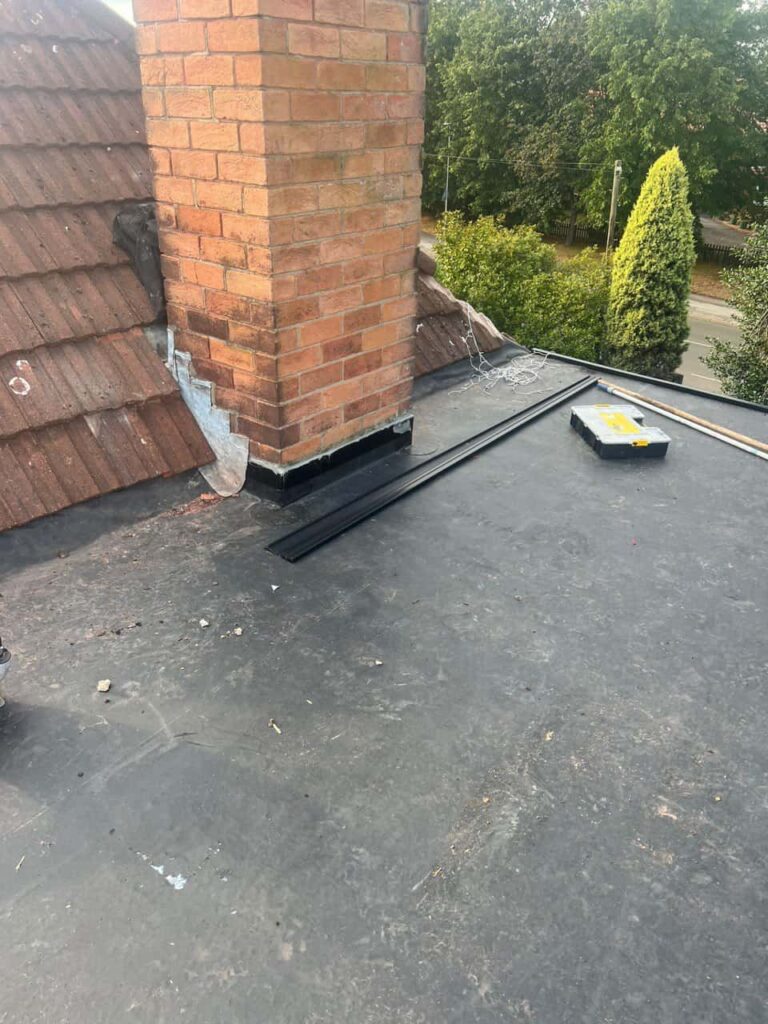A well-maintained roof is essential for protecting your property, but when signs of wear or damage appear, it’s not always clear whether a quick patch will do or if a full roof replacement is the better choice. While small repairs can extend the life of your roof, there comes a point when patching may only serve as a short-term solution rather than a lasting fix.
At LS Roofing Didcot, we work with homeowners across Didcot and Oxfordshire to assess their roofs and provide honest, professional recommendations. In this article, we’ll explain when patch repairs are appropriate, when a full roof upgrade makes sense, and how to identify the warning signs that your roof needs more than a temporary fix.
Understanding Roof Patching
What Is a Roof Patch?
Roof patching is a targeted repair technique designed to fix localised issues such as leaks, cracked tiles, or damaged flashing. It’s a cost-effective way to restore the roof’s functionality without replacing large sections.
When done properly, a patch can protect your home and prevent further damage. However, its success largely depends on the age of the roof, the type of materials used, and the extent of the underlying problem.
When Patching Works Well
A patch can be an effective solution in certain situations:
- Minor damage – Small leaks or isolated broken tiles that haven’t affected the roof structure.
- Newer roofs – Roofs less than 10–15 years old that are otherwise in good condition.
- Damage from external impact – Issues caused by a storm, falling branches, or wildlife activity.
- Localised wear – Problems confined to a specific area, such as flashing or a single valley.
In these scenarios, patching can restore the integrity of the roof while preserving the rest of the structure.
When a Roof Patch Isn’t Enough
There are times when patching may not resolve the issue, or when it only delays a more serious problem. If your roof has reached a certain age or sustained widespread damage, a full replacement may be the most practical solution.
1. Recurring Leaks
If leaks continue to appear even after multiple repairs, the problem may lie deeper than the visible damage. Repeated patching without addressing the root cause can lead to internal structural deterioration and dampness in loft spaces.
A full inspection from LS Roofing Didcot can reveal whether hidden damage, such as rotting underlay or failing joints, is causing the issue. In these cases, a new roof will provide lasting protection and prevent recurring problems.
2. Widespread Tile or Material Deterioration
If you notice cracked, curling, or missing tiles across multiple areas, your roof’s overall surface may be failing. Replacing just one or two sections won’t restore structural strength or long-term weather resistance.
Older roofing materials often degrade evenly over time, so patching one section may only highlight differences in appearance or performance between old and new areas. A full roof upgrade ensures consistency and renewed durability.
3. Structural Weakness
When the roof deck or supporting structure beneath the surface becomes compromised — whether due to water damage, rot, or age — patching the top layer won’t fix the underlying issue.
A full replacement allows professionals to address internal damage, replace weakened components, and ensure the entire system is stable and secure for decades to come.
4. Repeated Repair History
If your roof has required frequent patching over the years, it’s often a sign that the material’s lifespan is nearing its end. Multiple small repairs may seem convenient, but they can quickly add up without solving the fundamental problem.
At this stage, replacing the entire roof provides a more reliable and long-term solution.
5. Roof Age and Material Lifespan
Every roofing material has a natural lifespan. If your roof is approaching or has exceeded 20–30 years, its protective properties may have significantly weakened. Even if patching resolves a small issue temporarily, the roof as a whole may not perform as intended.
A full upgrade at this stage improves energy efficiency, appearance, and protection while eliminating the need for ongoing repairs.
The Benefits of a Full Roof Upgrade
When a roof replacement becomes necessary, it offers several long-term benefits beyond simply fixing existing problems.
Enhanced Weather Protection
A new roof provides modern materials, improved insulation, and advanced underlays designed to withstand heavy rain, wind, and temperature changes. This ensures your home remains secure and dry year-round.
Improved Energy Efficiency
New roofing systems help regulate temperature more effectively, reducing heat loss and improving overall energy performance. This can make your property more comfortable in all seasons.
Uniform Appearance
Replacing an entire roof ensures a consistent colour and finish, enhancing your property’s kerb appeal and value. Patching, in contrast, can sometimes leave visible differences between old and new materials.
Long-Term Value
A full replacement offers peace of mind by eliminating hidden weaknesses. It’s a long-term investment that prevents future repair costs and provides dependable protection for many years.
How to Decide Between Patching and Replacement
Knowing when to patch or replace your roof depends on several key factors:
- Roof age: Older roofs are generally better candidates for replacement.
- Extent of damage: Localised issues can be patched, but widespread deterioration requires full replacement.
- Water ingress: Recurrent leaks may indicate deeper structural problems.
- Previous maintenance: Frequent patching suggests the need for a long-term solution.
A professional inspection from LS Roofing Didcot can identify whether the damage is isolated or part of a wider issue. This ensures you make an informed decision that delivers lasting value for your property.
The LS Roofing Didcot Approach
At LS Roofing Didcot, we believe in providing honest, expert advice based on each roof’s unique condition. Our experienced team conducts detailed assessments to determine whether a patch repair, partial replacement, or full upgrade is the most suitable solution.
We focus on long-term reliability, using high-quality materials and precise installation techniques to ensure every roof we work on performs exceptionally in the challenging British climate.
Conclusion
A roof patch can be an effective short-term solution for localised damage, but it’s not always the best option for ageing or severely compromised roofs. Understanding when to upgrade your entire roof helps protect your property, improve energy efficiency, and prevent recurring issues.
LS Roofing Didcot in Didcot, Oxfordshire, provides expert roofing inspections, repairs, and replacements tailored to each customer’s needs. If you’re unsure whether your roof needs a simple patch or a full upgrade, contact LS Roofing Didcot for professional advice and dependable roofing solutions that stand the test of time.
Call us on: 01235 423 795
Click here to find out more about LS Roofing Didcot
Click here to complete our contact form and see how we can help with your roofing needs.

